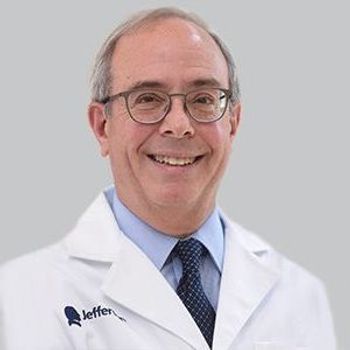
Mobile Stroke Units Considerably Improve Time to Treatment in Ischemic Stroke
In light of the public health implications of speedier stroke treatment, these data suggest that mobile stroke units could represent a potentially beneficial addition to stroke systems of care in dense cities.
Matthew E. Fink, MD
New study results imply that
The trial was conducted using NewYork Presbyterian Hospital's MSUs, equipped with portable CT scanners to detect ischemic stroke, in New York City’s Manhattan borough. Ultimately, the study showed that those who were treated for ischemic stroke in the MSU received alteplase up to 30 minutes sooner than those who received conventional ambulance transport, and thus treatment at the hospital.2
“When it comes to stroke treatment, 30 minutes can be the difference between making a full recovery from a stroke and living independently, or becoming disabled and needing help with the activities of daily living,” lead author Matthew E. Fink, MD, chair of neurology, and Louis and Gertrude Feil Professor in Clinical Neurology, Weill Cornell Medicine, and neurologist-in-chief, NewYork-Presbyterian/Weill Cornell Medical Center, said in a statement. “The faster patients receive alteplase, the more likely they are to recover quickly and with fewer complications.”
Fink and colleagues wrote that in light of the public health implications of speedier stroke treatment, these data suggest that MSUs could represent a potentially beneficial addition to stroke systems of care in dense cities.
LISTEN NOW:
The study included 85 patients, 66 of which transported by MSU and 19 by conventional ambulance. In total, 43.9% (n = 29) of those in the MSU group and 47.4% (n = 9) in the ambulance group were treated with intravenous (IV) tissue plasminogen activator (tPA). Additionally, those receiving MSU care were significantly more likely to be picked up within a 2-mile radius of a higher number of designated stroke centers (DSCs), being closer to a mean of 4.8 compared to 2.7 with conventional ambulance (P = .002)
Those who received MSU care had a dispatch-to-thrombolysis time (DTT) of 61.2 minutes compared to 91.6 minutes for the conventional group (P = .001). After conducting multivariable analysis adjusting for population density and number of DSCs, MSU care was associated with a mean decrease in DTT of 29.7 minutes (95%CI, 6.9—52.5) when compared to conventional care.
Within that estimated difference, the MSU group had a mean increase in dispatch-to-ambulance arrival time of 6.5 minutes (95% CI, 2.4—10.6; P = .002), which was offset by a mean decrease in ambulance arrival-to-thrombolysis time of 36.2 minutes (95% CI, —58.5 to –13.9; P = .001).
“This study provides further evidence suggesting a potential role for mobile stroke units in dense urban areas to increase our ability to treat stroke patients faster,” said Lee H. Schwamm, MD, executive vice-chairman of neurology, and director, Comprehensive Stroke Center, Massachusetts General Hospital, in a statement. “This study joins a large body of efforts to improve how we swiftly recognize, triage, transport and treat patients with stroke, which is the ultimate goal.”
Fink and colleagues identified a number of limitations to the work, including the relatively small sample size and the possibility of confounding factors (traffic, day of the week, the time of day, etc). To counter this, the group reviewed 26,919 patient ambulance call reports to identify, via strict criteria regarding the type of call made to emergency medical services (EMS) and the type of care received, to guarantee a close comparison to MSU care.
“We know that faster treatment equals better outcomes. However, further research is needed to establish if mobile stroke units improve long-term health outcomes and are a cost-effective solution in stroke systems of care for large cities, as they reflect a significant financial investment for cities and EMS agencies,” Schwamm said in a statement. “While the lack of definitive evidence of benefit and of third-party reimbursement for mobile stroke unit staffing and care are barriers, additional studies are ongoing and will help address these critical issues.”
REFERENCES
1. Kummer BR, Lerario MP, Hunter MD et al. Geographic Analysis of Mobile Stroke Unit Treatment in a Dense Urban Area: the New York City METRONOME Registry. JAHA. 2019;8(24):e013529. doi: 10.1161/JAHA.119.013529.
2. Mobile stroke units could expedite treatment and improve patient outcomes in urban areas [press release]. Dallas, TX: American Heart Association; Published December 4, 2019. newsroom.heart.org/news/mobile-stroke-units-could-expedite-treatment-and-improve-patient-outcomes-in-urban-areas. Accessed December 5, 2019.
Newsletter
Keep your finger on the pulse of neurology—subscribe to NeurologyLive for expert interviews, new data, and breakthrough treatment updates.































